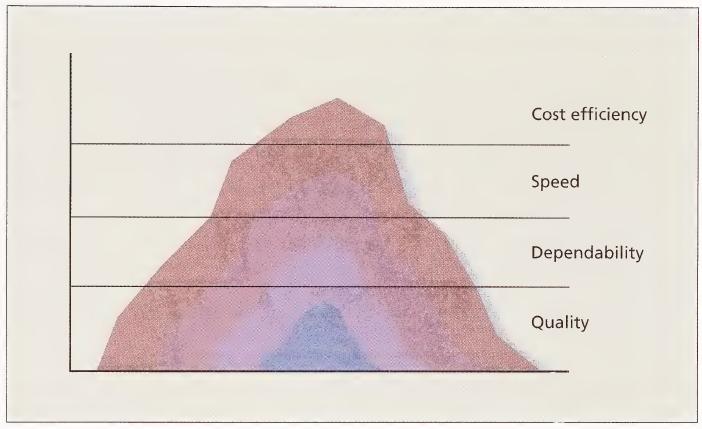Ferdows and De Meyer argue that long-term cost improvement is the result of having first achieved improvement
Question:
Ferdows and De Meyer argue that long-term cost improvement is the result of having first achieved improvement in quality, then dependability, and finally speed. There is a cumulative effect by which prior gains influence current gains, a process that can be illustrated as a pile of sand with four layers: quality at the bottom and cost at the top (see figure). [The sand represents management effort and resources.] Increases in quality help increase dependability; then gains in both quality and dependability spur gams in speed. Finally, the cumulative effects of these prior gains result in cost efficiency gains.
Ferdows and De Meyer also point out that, due to the shape of the pile of sand, achieving a small gain in cost requires successively larger gains for the other aspects ofperformance (e.g., a 10 percent cost gain may require a 15 percent gam in speed, a 25 percent gain in dependability, and a 40 percent gain in quality). The implication is that long-term successful cost reduction is achieved indirectly—through gains made in other strategically important areas. Thus, the cost reduction strategy should be deeply embedded in the firm’s competitive strategy.
a. How does the depiction of cost control in the figure relate to the concept of activity-based management?
b. If the relation between cost and quality is as depicted in the figure, how does the quality level of the production process serve as a constraint on organi¬ zational profitability?
c. What does the figure suggest about the prospects of competing via a strategy of offering low-cost/low-quality products?
Step by Step Answer:






